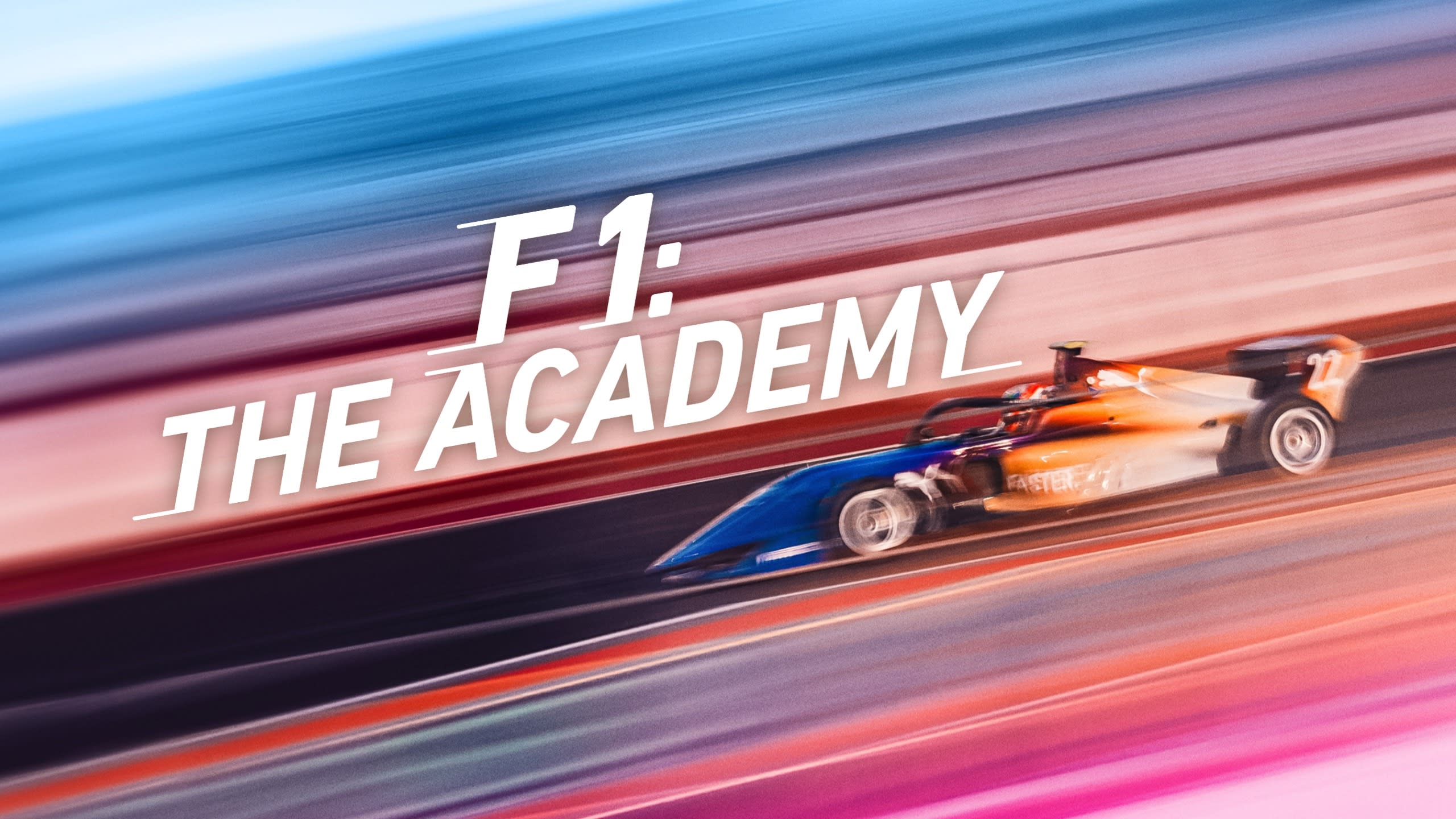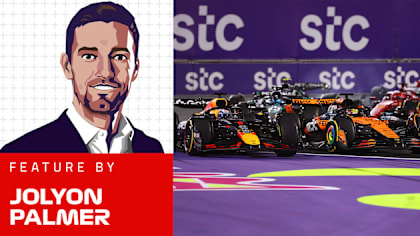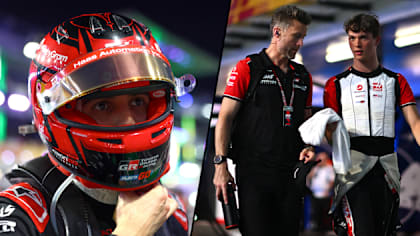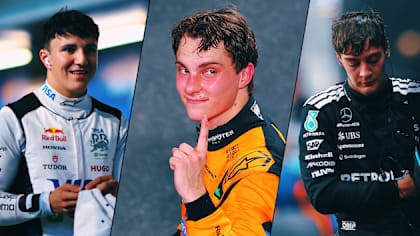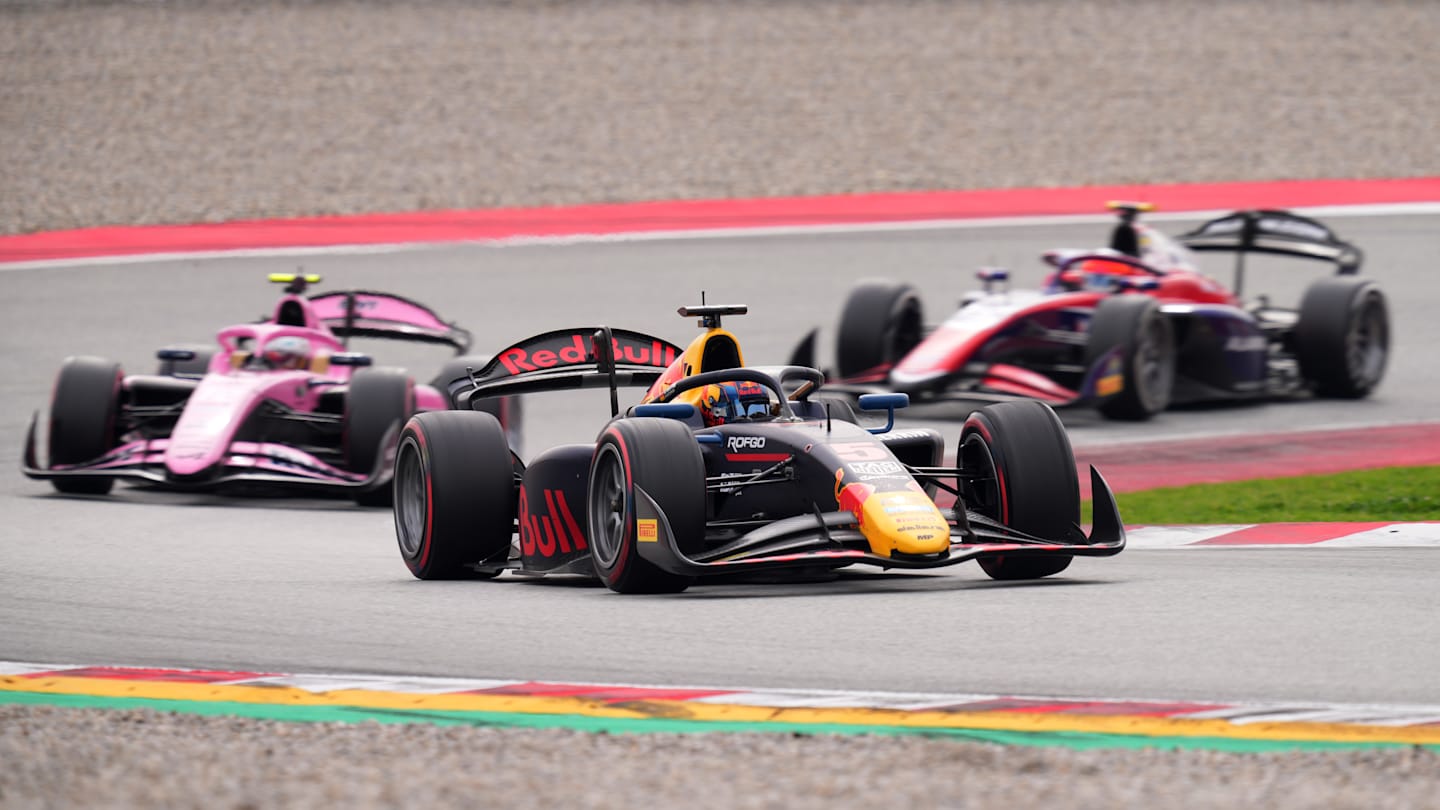
Feature
The beginner’s guide to Formula 2
Share

How does a driver reach Formula 1 with the skills needed to battle the very best racers in the world? Our beginner’s guide provides all you need to know about Formula 2, the second tier of the FIA's single-seater pyramid – explaining what it is, how it works and why it’s the ultimate training ground on the Road to F1.
What is Formula 2?
The FIA Formula 2 Championship – or F2 – is the penultimate step for the brightest young talents in motorsport as they try to make it to Formula 1.
READ MORE: A guide to the FIA Formula 2 Championship
It’s a single-make championship, meaning that each team is given the same car and engine. As a result, no driver has a technological advantage over others heading into races. Their ability to extract the most performance from themselves and their machines is what makes the difference out on track.
Formula 2 is an F1 support championship, with all 14 Formula 2 rounds held on select Formula 1 race weekends across the globe. This not only gives F2 drivers an opportunity to hone their talents on tracks around the world, but also helps show their abilities to the watching F1 paddock.
Formula 2: Ultimate guide to the 2025 season
Who races in Formula 2?
F2 pits 22 of the best young racing talents against one another with 11 of the most well-known teams in junior motorsport. Just like in Formula 1, each team enters two cars.
21 drivers have made that coveted step from F2 to F1 since the championship’s inaugural season in 2017. F1 race winners Charles Leclerc, Lando Norris, George Russell and Oscar Piastri each made the step up after racing in Formula 2, as did Yuki Tsunoda and Alex Albon.
In 2025, five rookies have made the jump up, the highest number of F2 drivers to join the Formula 1 grid in one season.
2024 F2 Champion Gabriel Bortoleto joins Kick Sauber for 2025. The Brazilian became just the second driver after Piastri to win the F3 and F2 Championships in consecutive seasons as a rookie.
READ MORE: The teams and drivers racing in Formula 2 this season
Runner-up to Bortoleto in 2024, Isack Hadjar is the latest Red Bull Junior Team driver to make it to Formula 1, as he joins Racing Bulls for the 2025 campaign.
Oliver Bearman became the youngest ever Ferrari F1 driver when he deputised for Carlos Sainz at the 2024 Saudi Arabian Grand Prix. This year, the British racer joins the Haas F1 Team.
His 2024 PREMA Racing teammate Andrea Kimi Antonelli steps up to replace Lewis Hamilton at Mercedes, having risen through the single seater ranks as a member of the team’s junior driver setup.
Finally, after a year on the sidelines as the team’s Test and Reserve Driver, and following his F1 race debut at the 2024 Abu Dhabi Grand Prix, Jack Doohan races full-time for Alpine.
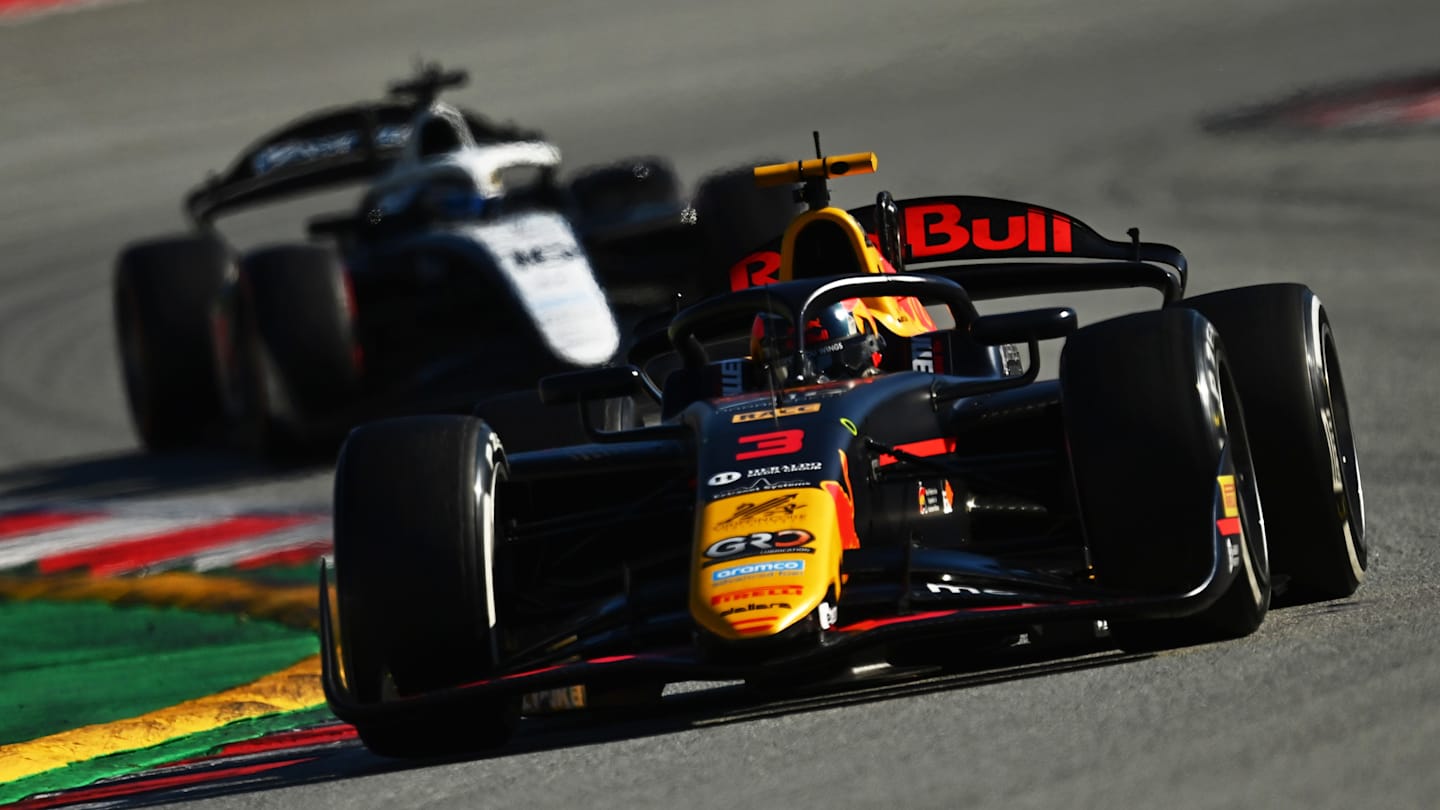
Formula 2 is a single-make championship, so all the F2 teams use the same car from the same supplier
Where does Formula 2 race?
There are 14 rounds taking place in 13 countries across four continents. Every round takes place on an F1 weekend, and each round has two races – the Sprint Race and the Feature Race – meaning there are 28 races in an F2 season.
Beginning with three flyaway events in Australia, Bahrain, Saudi Arabia, the F2 paddock then makes its way to Europe.
READ MORE: The FIA Formula 2 Championship calendar
The busiest part of the calendar, Formula 2 first visits Imola in Italy, before heading to Monaco, Spain, Austria, Great Britain, Belgium, Hungary, Italy once more for Monza, and then Azerbaijan.
Formula 2 then wraps up its season back in the Middle East for the final two rounds with Qatar followed by the season-ending weekend in Abu Dhabi.
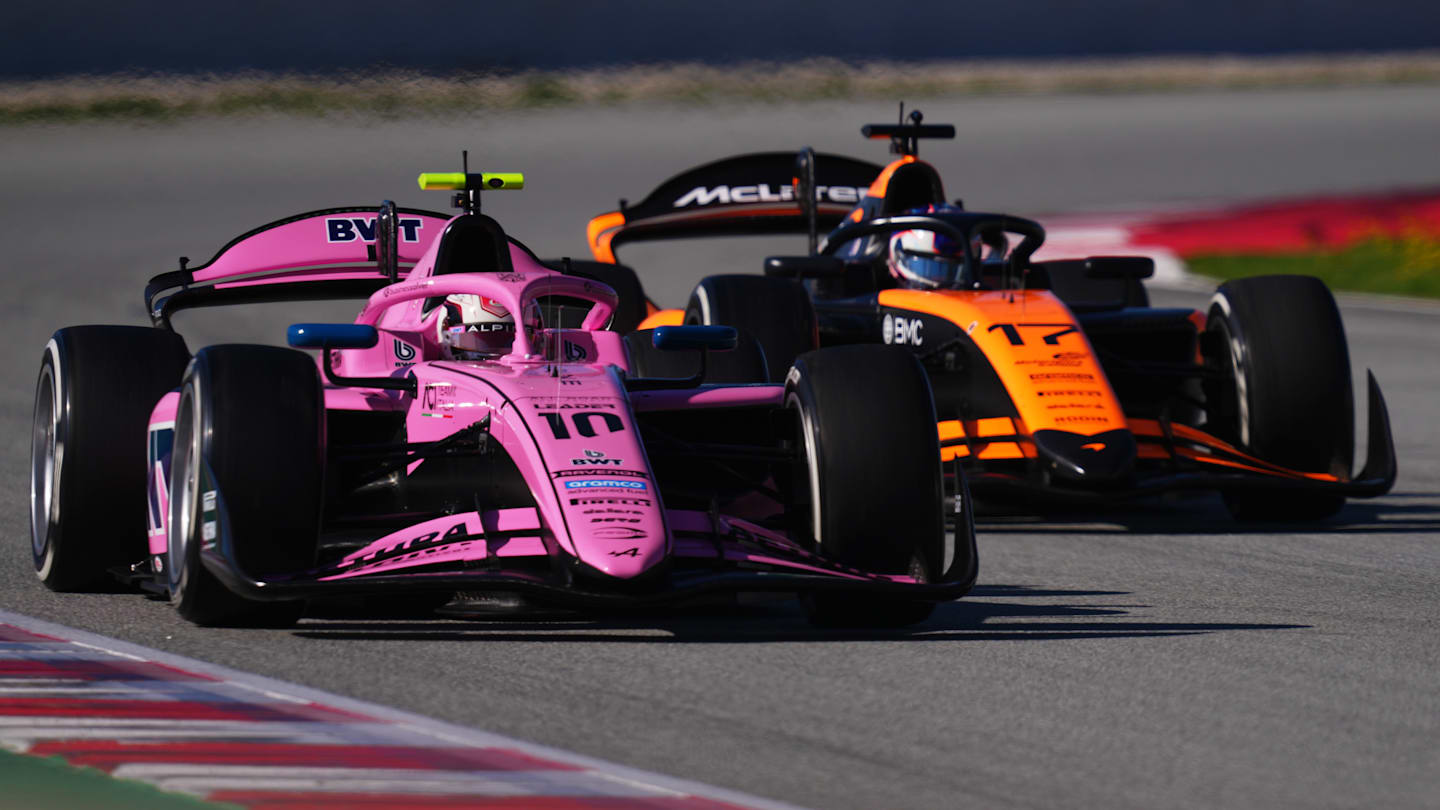
There are 14 Formula 2 rounds in 2025, all taking place on F1 race weekends
How does an F2 race weekend work?
Just like in Formula 1, a Formula 2 race weekend takes place across three days – typically Friday, Saturday and Sunday. However, the F2 format has a few differences.
Friday starts with a 45-minute Free Practice session. This gives the teams and drivers a chance to acclimatise themselves to the circuit and to fine-tune their setups. Friday finishes with the 30-minute Qualifying session.
While Saturday is traditionally Qualifying day in F1, for F2 it brings the first race of the weekend – the Sprint Race – where drivers battle it out over 120 kilometres (or 45 minutes +1 lap, whichever comes first).
READ MORE: The beginner’s guide to the F1 weekend
The starting grid for the Sprint Race is determined by reversing the top 10 fastest drivers from Friday’s Qualifying. This means the driver who set the fastest time will start from P10 on Saturday, giving them a chance to further demonstrate their racecraft and overtaking ability.
Sunday sees the final race of the F2 weekend – the Feature Race – take place before the Formula 1 Grand Prix. The grid order for this is based on Friday’s Qualifying session, with the race itself run over 170 kilometres (or 60 minutes +1 lap, whichever comes first).
Drivers must complete at least one pitstop during the Feature Race and just like in F1 they must use both available tyre compounds before the race finishes.
Highlights of the 2024 F2 season
How are points scored in Formula 2?
The points system in Formula 2 has many similarities to that used in F1, but there are a few differences.
In the F2 Sprint Race, the top eight drivers score points. The winning driver earns 10 points, second place 8 points, third gets 6, scaling down by a point each position to the driver in P8 who takes one point.
READ MORE: A guide to the F2 rules and regulations
The driver who starts the F2 Feature Race from pole position is awarded two points.
Points in the Feature Race match the system used in Formula 1, with the winner earning 25 points, second place taking 18, third getting 15 points, and then scaling downward 12, 10, 8, 6, 4, 2 and 1 point for the driver finishing in P10.
The driver with the fastest lap who finishes inside the top 10 is given an additional point. This applies to both the Sprint Race and the Feature Race.
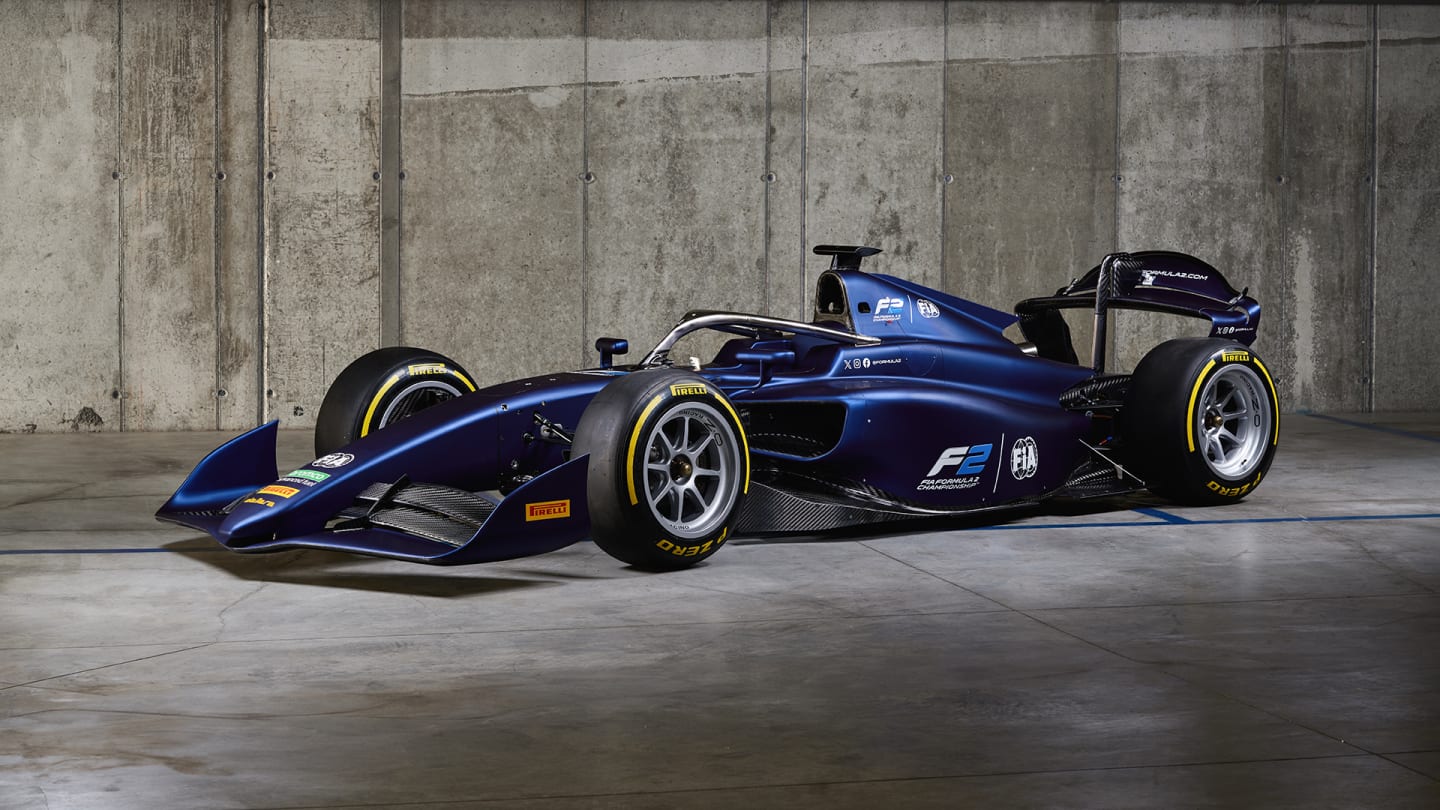
The current generation F2 car has been designed to offer the best preparation to drivers aspiring to get to Formula 1
How is an F2 car different to an F1 car?
Formula 2 is a single-make championship meaning that unlike Formula 1, all the F2 teams use the same car from the same supplier – Dallara.
In 2024, Dallara introduced an all-new car to F2, one that is more in line with the current F1 ‘ground effect’ aerodynamic concept and gives the drivers the best preparation for Formula 1.
READ MORE: A guide to the Formula 2 car
Just like in F1, there is less ‘dirty air’ – or disrupted airflow – produced by the cars, creating more wheel-to-wheel racing and allowing those behind to follow more closely.
Dallara designed the 2024 car to be as close to an F1 car as possible in terms of safety, systems, sustainability, accessibility, look and performance.
Powered by a 3.4 litre V6 turbo-charged engine designed by Mecachrome, the F2 car continues to run on the Aramco advanced fuel, which is being developed to the FIA’s 100% sustainable fuel standard.
YOU MIGHT ALSO LIKE
OpinionF1 Unlocked PALMER: Verstappen’s Turn 1 penalty proved decisive in Jeddah, so were the stewards right?
News Ocon admits Haas struggled with ‘quite a few things’ in Saudi Arabia while Bearman takes positives from first triple header
FeatureF1 Unlocked 5 Winners and 5 Losers from Saudi Arabia – Who leaves Jeddah the happiest and who has work to do?
News Doohan praises Alpine for removing pressure around his future with the team
